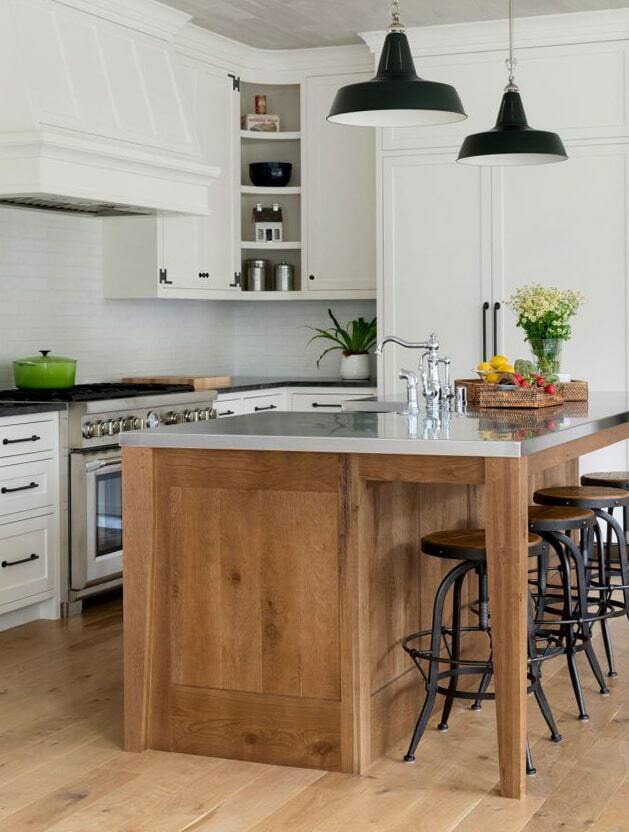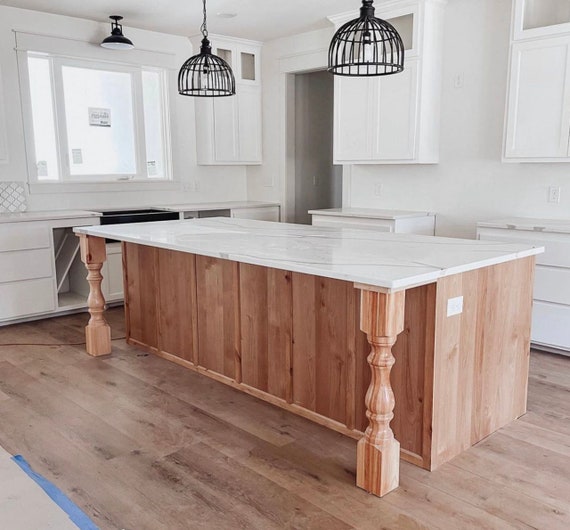Discovering the Necessary Functions of a Kitchen Island Leg for Your Culinary Space
The kitchen island offers as a central center in any type of culinary room, and the option of leg style is pivotal in boosting both its capability and visual allure. Comprehending the vital functions of kitchen island legs-- consisting of material alternatives, design styles, and security elements-- can substantially impact the overall experience within the kitchen.
Importance of Kitchen Island Legs
Cooking area island legs play a vital duty in both the functionality and aesthetics of a kitchen area. They not just sustain the weight of the island but also improve the general layout, contributing to the kitchen's visual charm. The selection of legs can dictate the style of the kitchen, be it contemporary, standard, or rustic.
Functionally, durable and appropriately created legs make sure security, enabling the risk-free use of the island for various tasks such as cooking, dining, or enjoyable. Strong legs protect against shifting and wobbling, providing a trustworthy surface area for day-to-day tasks.
Furthermore, the height and positioning of the legs can affect the convenience degree for those seated at the island. A well-considered elevation can suit bar feceses or chairs, advertising an inviting atmosphere for events.
Along with these functional factors to consider, cooking area island legs can offer as a focal factor in the area (kitchen island leg). Decorative or uniquely developed legs can raise the style visual, making the island a focal point. Hence, picking the appropriate cooking area island legs is essential for stabilizing kind and feature in any kind of cooking area
Product Options for Legs
Choosing the suitable material for kitchen island legs considerably impacts both toughness and style. Usual product alternatives consist of timber, steel, and stone, each offering distinctive benefits.
Timber is a popular choice due to its heat and versatility. It can be conveniently personalized to match different decor designs, from rustic to modern. Hardwoods like oak and maple offer excellent toughness and long life, while softer woods can be extra prone to wear and tear.
Steel legs are favored for their streamlined, modern visual. kitchen island leg. Stainless-steel and aluminum are not only durable however also immune to corrosion and rust, making them perfect for kitchen settings. They can produce an industrial appearance and are commonly offered in various coatings to match other cooking area components
Stone legs, such as granite or marble, add a component of luxury and security. While much heavier than various other materials, they supply phenomenal durability and can hold up against considerable weight. They might call for extra assistance to make sure proper equilibrium.
Eventually, the option of material ought to align with both functional needs and the general layout vision of the kitchen space, ensuring that the island legs boost both utility and aesthetic appeals.
Design Designs to Think About
What layout styles should be thought about when choosing legs for a cooking area island? The choice of leg design considerably affects the overall visual of your culinary room. For a contemporary cooking area, minimalistic and streamlined leg styles, such as stainless-steel or geometric shapes, can enhance the modern allure, offering a tidy and uncluttered appearance.
On the other hand, standard kitchens take advantage of classic Source designs such as turned or sculpted wood legs, which add heat and character. These choices frequently include elaborate details that enhance vintage home furnishings. For a rustic ambiance, take into consideration legs made from recovered wood or wrought iron, which bring a natural, natural quality to the room.
If you lean towards a commercial style, durable metal legs with a troubled finish might be optimal, providing an edgy yet innovative touch. Furthermore, farmhouse design kitchen areas can include beefy legs that evoke a feeling of strength and homeliness.

Height and Stability Factors
The height and stability of a kitchen island are crucial components that directly impact its capability and individual experience. A suitable cooking area island leg must offer sufficient elevation to suit a variety of jobs, from cooking to laid-back dining. Usually, kitchen islands separate 36 to 42 inches tall, aligning with conventional counter and bar heights. This range makes certain convenience for users while doing various tasks, hence enhancing the general use of the space.
Stability is equally vital, particularly as kitchen islands frequently offer as focal points in cooking environments. The leg's add-on to the island's base have to be secure, making certain durability and resilience versus the wear and tear of daily usage.
Customization and Devices
Customization alternatives and accessories for kitchen island legs can dramatically improve both the visual appeal Check This Out and functionality of the area. House owners can select from a selection of materials, including additional info timber, metal, and stone, permitting seamless assimilation with existing kitchen area decor. The selection of finish-- be it a natural discolor, paint, or powder coating-- additional personalizes the appearance, making sure that the island matches the total design motif.
In enhancement to material and coating, house owners might also discover the consolidation of devices such as ornamental braces, adjustable feet, or incorporated shelving. Brackets can supply extra assistance while adding to a rustic or modern visual. Adjustable feet are especially advantageous for irregular floor covering, ensuring the island continues to be secure and level, which is essential for both safety and security and functionality.

Conclusion
In final thought, kitchen area island legs offer an essential role in providing stability and enhancing the total visual of the cooking area. Personalization choices and accessories can raise the kitchen area island, making it an unique focal point within the home.
The kitchen area island serves as a central hub in any culinary space, and the option of leg style is essential in boosting both its capability and aesthetic allure. Understanding the vital functions of kitchen island legs-- including material choices, design styles, and stability elements-- can substantially influence the total experience within the cooking area.Cooking area island legs play a critical duty in both the capability and aesthetic appeals of a kitchen space.What design styles should be considered when choosing legs for a kitchen island?In conclusion, kitchen island legs offer an important role in offering security and enhancing the general visual of the culinary area.
Comments on “How to Incorporate a Kitchen Island Leg into Your Kitchen Remodel”